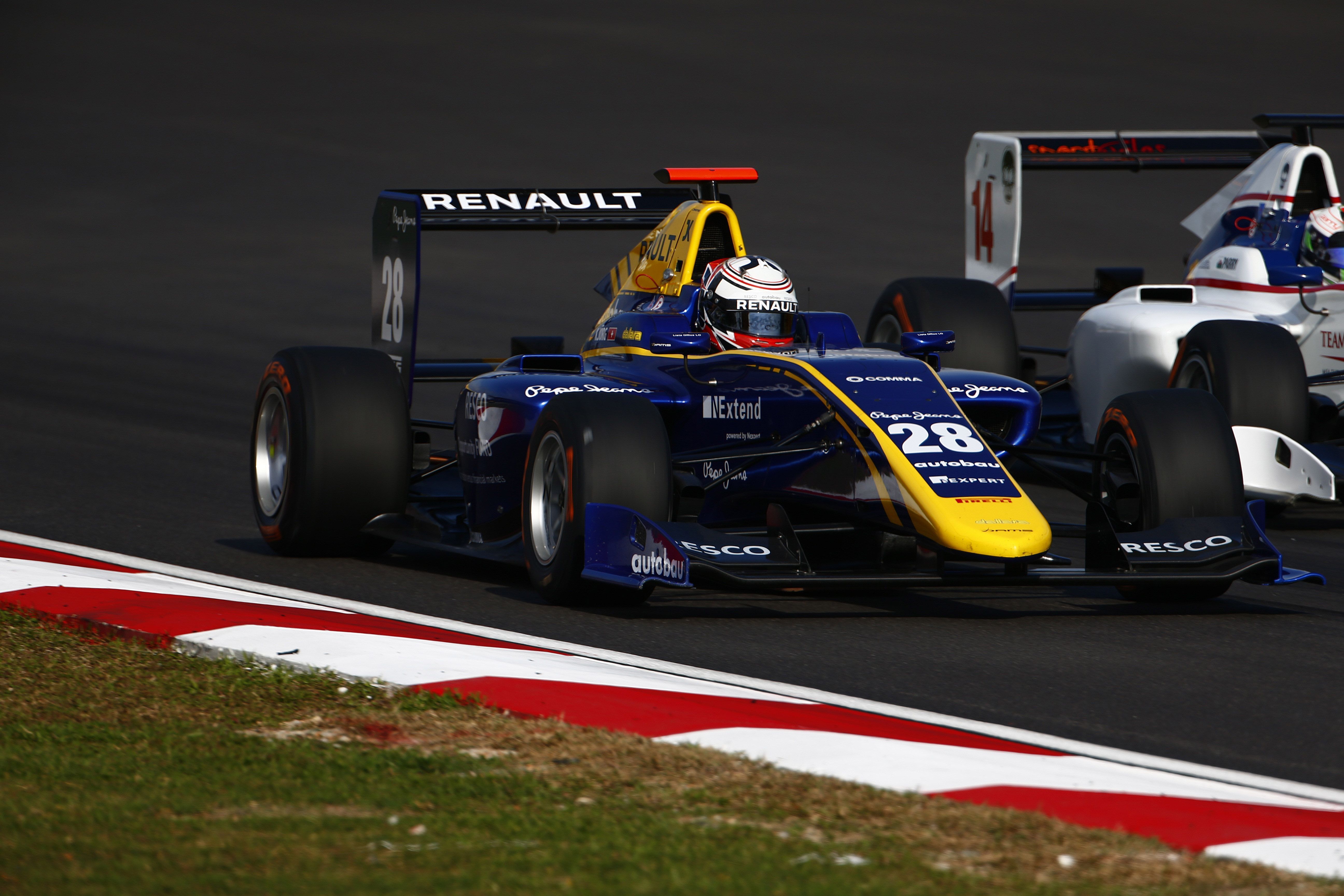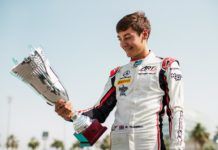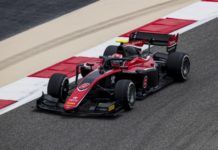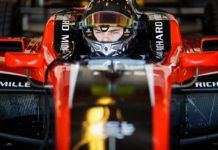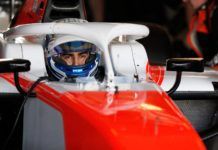For the 2017 season, DRS (Drag Reduction System) will be added to the GP3 car following in the footsteps of GP2 Series and Formula 1.
GP3 Series CEO Bruno Michel explained:
“We put the DRS on the GP2 car to help the drivers learn how it works before they get to F1. The device works exactly as the one they have in F1, with the same detection zones. I want to underline that we did not add it in GP2 to improve the show as it was already very entertaining, but it’s a good way for the drivers to begin their training of this functionality.
“We introduced a new car in GP3 this year and it has given us 100% satisfaction in terms of reliability so we decided to add another layer to the drivers’ apprenticeship with the addition of DRS in order to prepare them for GP2. Of course, it will also spice up the GP3 races which have been a little bit too quiet at the beginning of the season, but they have started to become extremely enjoyable in recent rounds. DRS will also attract drivers to the Series because they are always looking for anything that will help them prepare for the future.”
We sat down with GP3 Series Technical Director Didier Perrin and he gave us the lowdown from a technical perspective on the exciting introduction of DRS.
GP3 Series: How will the DRS going to work on the GP3 car? Will there be similarities to GP2?
Didier Perrin: It will work in exactly the same way as GP2, and therefore it will work identically to F1. It will be the same principle: the top rear flap will fully open. It will have the same detection zones and opening criteria: the drivers will be able to use it anytime they want during free practice and qualifying within the designated zones. Then, during the races, the drivers will be able to use it within the zones and depending on the gap with the car in front. The same DRS zones will be used in GP2 and F1. This will be another good tool for the drivers to learn as they make their journey up to GP2 and then hopefully Formula 1.
GP3 Series: What are the technical challenges by adding it to the GP3 car?
Didier: The first and most important step was to define the top rear wing modification in order to make the DRS efficient. There would be no point in getting DRS if you can’t gain enough of an advantage over the driver in front. In fact, the two cars must be in line together at the braking point. So we had to re-design the top rear wing to make sure the driver can be in a position to attack the car in front of them at the end of the straight. After that, we had to make a prototype, then test it on track, and finally prepare and deliver the kits to the teams in time for the pre-season tests.
GP3 Series: When will you start testing it and for how many days?
Didier: We will have at least eight test days on three different tracks. We will also conduct a straight-line test because we will need to do some aerodynamic checks and aero maps with and without DRS. The testing will start in mid-October and will finish before Christmas. The teams will get the new kit at the beginning of 2017. Another challenge we faced was making the DRS kit affordable for the teams, so we tried to minimise the number of parts that needed changing. Some of the parts will only be modified and not completely replaced in order to make the costs as low as possible. We also have simplified the maintenance of this by using the same components as on the GP2 car.
GP3 Series: How will this affect the team’s preparation over a race weekend?
Didier: It will be new because the car set-up can be different. Up until now, we were imposing a maximum downforce level for the races; with DRS this will no longer be the case. So the average level of downforce in the races will be higher, therefore the average laptime in the races will also be faster.

